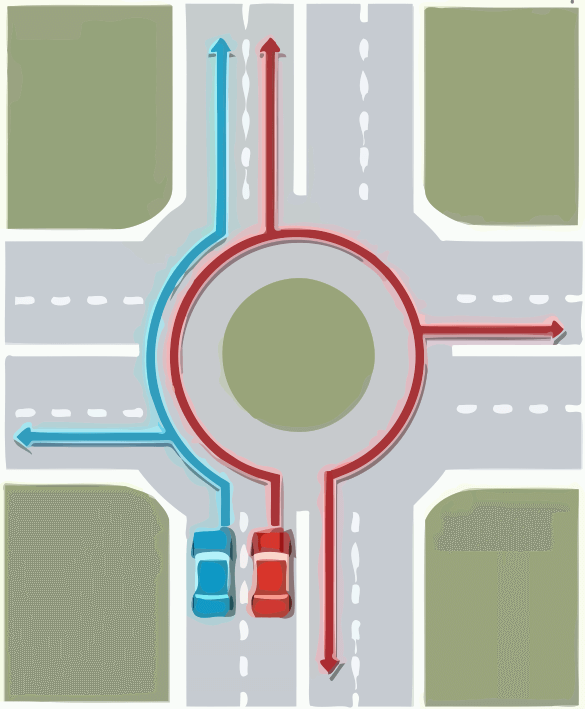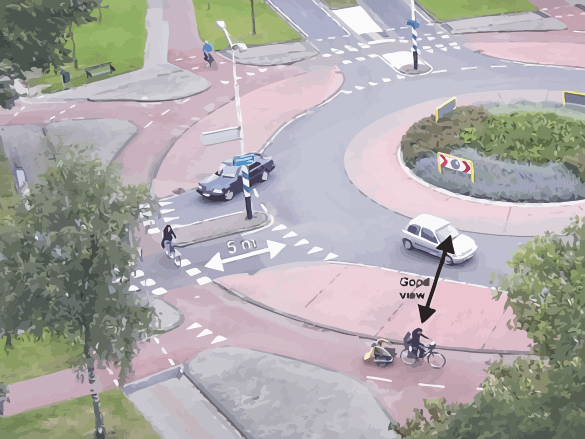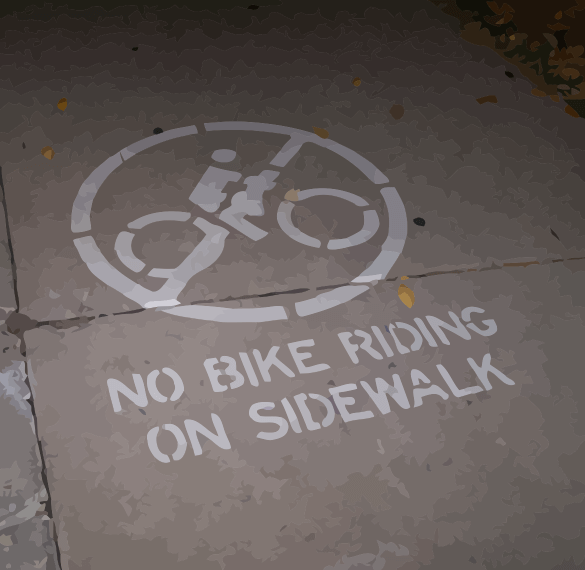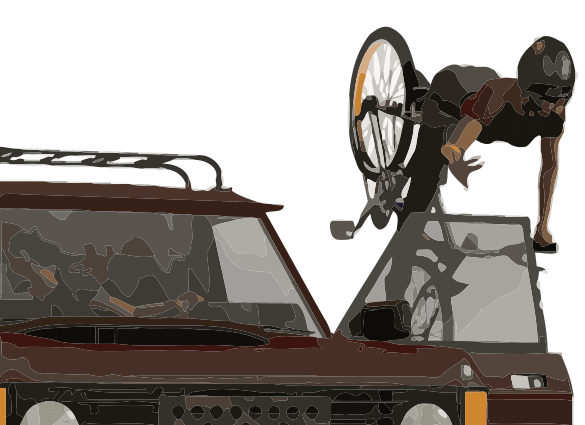How to Safely Ride Your Bike In Traffic
Table of Contents
There is no doubt that cycling has increased in popularity over the years. Some people like to ride on weekends for leisure, while others use it as part of their daily commute. Whatever the reason, you will often be riding among other vehicles, most of them much larger and heavier than your bicycle. Learning to get along with others is vital to your safety and your enjoyment.
The number one rule is don't ever get into a fight with a car. You will almost always lose. You might think that the driver won't dare do anything that will harm you while you are cursing and giving him the finger, but just as you have lost your temper so might he. And if this happens, he has a very powerful weapon at his disposal. So, stay calm, be polite, and show some respect.

Visibility
Make sure you're easily visible. Remember, you take up very little space so while a driver will notice a truck, they might not notice you. So use color to your advantage. Wear a bright vest, even during the day, or wear a bright shirt. Dark clothing may look cool, but it is simply asking for trouble.
When riding at night, or even on cloudy days, have strong front and back lights, and turn them on. Consider a rear light on your helmet, it is higher up and is more visible to drivers.
Make sure your bike is equipped with front a rear reflectors like the one to the right.
If it's raining, drivers' visibility will be decreased. Avoid this situation if you can, but if you can't, turn on your lights even during the day.
If you must ride at night pick roads that have a wide shoulder or a bike lane. Ideally both are well lit.
You should also have a bell on your bike. Make sure it is easily reachable and use it. A bell can be used as a gentle warning to others and just for emergencies. For example, if you see someone that might cross in front of you warn them, don't wait until it's too late. But don't use your bell to get pedestrians out of your way.
Predictability
Ride in a manner that will not surprise other drivers. If you swerve you are doing something which drivers are not expecting you and they might hit you. Ride in as much of a straight line as possible. If there are parked cars every few metres do not swerve into the empty spaces because this tells other drivers that you are out of the way and, when you come out again, there may be a car in your way.

If you do change lane positions make sure you have room and signal your intentions with your arm.
If you are turning left change lanes like a car. If there is way too much traffic for you to turn left properly, then get off your bike and cross the street like a pedestrian. Do NOT ride through like a pedestrian. This is illegal and dangerous.

Roundabouts
If you happen to live in a city with roundabouts you need to use extra caution. Again, ride your bike like a car. Use the appropriate lane. If you think it's too dangerous, take the first exit, ride a few meters away from the roundabout, and cross like a pedestrian, preferably at a proper cross walk.

If you are lucky enough and live in a city with well developed bike paths the roundabout may be well designed to allow for cycling traffic (see the image to the right). Remain cautious.
Follow the Rules
Drivers of other vehicles expect you to follow the rules. In fact, even other cyclists expect you to follow the rules, so do it. By not following the rules you are sending a message that you are above the law. When drivers see you behaving this way, you lose respect. This may result in drivers not being as careful around you or other cyclists.

Sidewalks are not for bicycles. Believe it or not, there are more dangers on sidewalks for cyclists. Pedestrians do not expect bicycles on the sidewalk and may walk in an unpredictable manner. Also, since driveways intersect sidewalks, there's an increased chance of being hit by a car going in our coming out. The only exception for riding on sidewalks is for children if they are riding slowly. From a legal perspective, it is usually the size of the wheels that determine if a bike can be ridden on the sidewalk. Regardless, even children riding on the sidewalk must give the right of way to pedestrians.
As an adult riding on the sidewalk don't be surprised if you get a ticket. If by chance you do hit a pedestrian you will be liable.
Ride In Groups
If you are new to street riding, consider joining others. This will make you all more visible and you will learn the ropes from more experienced riders. Ride in single file and do not block traffic, which is something large groups often end up doing. This just increases stress for drivers and may make them dislike cyclists more.
Common Cycling Roads
Every city has roads that are more commonly traveled by cyclists. Ride on these roads as it will be much safer since drivers have learned to expect cyclists in traffic. As mentioned above, pick well lit roads that have a bike lane or at least a wide shoulder.
How to Pass
If you happen to be riding in slow traffic and you wish to pass a car you must do so as if you're driving a car yourself. In countries where driving takes place on the right, passing must happen on the left. If a car is stopped at a red light, legally, you must stop behind the car. You should not try to pass it from the left by squeezing yourself between the curb and the car. Almost certainly the driver will not see you, can make a turn, and hit you.
Dooring
This is a term given to the phenomenon of a driver being stopped at a curb and opening their door to get out without checking for oncoming traffic. As a cyclist, if you are not careful, you might collide into the door. That is why you should always allow a bit of space between you and parked cars. Of course, this is sometimes difficult depending on the other traffic and how wide the lanes are. With practice, and by being observant, you'll learn to spot drivers that are in their cars and are possibly about to open their door.

The Right Bike
Another important aspect is to have the proper bike for you. For street riding, most people prefer mountain bikes, hybrids, or city bikes. Road bikes are a bit harder to handle. If the bike is too small or too big for you, you'll have trouble handling it.
Make sure your brakes are in tip top shape, especially after the winter season, and check them regularly. Poor braking power is a good way to end up in a collision. Make sure your tires are properly inflated and that the tires aren't worn out, as this will affect steering quality, stopping power, and maneuvering ability.
Periodically check the steering column of your bike. If things start to come lose the handlebars will not stay lined up with the front wheel. Imagine making a sharp turn, your handlebars turning, but your wheel staying straight!
Courses
Many large cities have courses you can take to learn how to be a better cyclist. Check with your local cycling authority or governing body for more information.




Leave a Reply